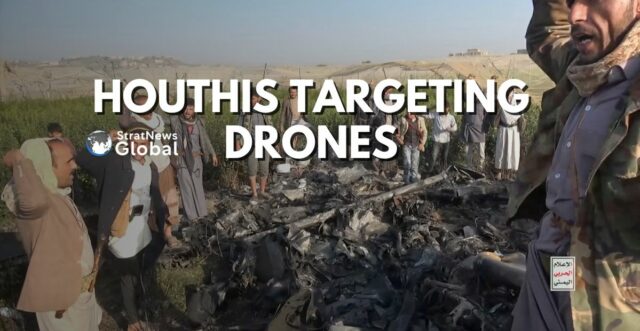It’s been a few days since Yemen’s Houthi rebels said they had shot down a US Reaper drone using a surface to air missile. In fact, last month they shot down two of them. But it would bring to more than 10, the number of Reaper drones brought down by the Houthis. Does India have reason to worry given that it is in the market for 31 such drones made by the US company General Atomics?
Naval sources told Stratnewsglobal that the drones which the US is flying over Yemen are of an older generation, “that are slower, less advanced in terms of sensors and motors”, and therefore more vulnerable. India on the other hand, plans to buy the latest generation of Reaper drones and if an agreement with General Atomics and the US government is signed today, the earliest one can expect the first drone would be 2027.
“There’s also the point that drones are not to be used in contested airspace,” the source pointed out. “Yemen is contested airspace given the kind of equipment and weapons the Houthis have, ranging from surface to air missiles to radars and sophisticated communication devices. Any drone venturing into contested airspace runs the risk of being shot down.”
Anti-Drone Weapons From Where?
Which brings us to the question as to who or which country, would have supplied the Houthis with the weapons needed to down drones? The answer: Iran and North Korea, evidenced by the seizure of an Iranian vessel in 2013 carrying advanced weaponry, and subsequent reports linking the delivery of North Korean missile technology to the Houthis.
The Houthi-run broadcaster Al-Masirah claimed shooting down the MQ-9, hours after video footage circulated online showing the purported missile striking the aircraft over Yemen’s Saada province. A single image online also appeared to show wreckage of the drone, with pieces resembling that of an MQ-9.
Since the Houthis seized the country’s north and its capital of Sanaa in 2014, the U.S. military has seen Reapers shot down in Yemen in 2017, 2019, 2023 and 2024. The U.S. military acknowledged the Houthis shot down two MQ-9s in September.
Michael Knights of the Washington Institute for Near East Policy says the Houthis have improved their air defence systems with better weapons in recent months, many coming from Iran, upping their ability to hit U.S. targets with accurate fire.
He said the new and upgraded missiles and systems that the Houthis have obtained from Iran include the SA-2 surface-to-air missiles that can can take down a Reaper or other drone.
The U.S. military has struggled to stop some Houthi air defence systems because rather than radars, the Houthis often use electro-optical systems to find targets. They have no radar signature and are harder to detect.
Counter Drone Tactics
In recent years, Iran has been able to jam the communication link between the Reaper drone and its operators back on land. The U.S. communicates with drones via satellite, so when that communication link between the aircraft and the satellite is jammed, operators can no longer control the drone. It can go off course and even crash, and become an easier target for hostile fire.
The Russians have been using this tactic against U.S. drones over Eastern Europe and Syria for some time. The interference severely inhibits the U.S. ability to gather intelligence and increases the chance that the drones could drift into unfriendly airspace
General Atomics Reapers, which cost around $30 million apiece, can fly at altitudes up to 50,000 feet and have an endurance of up to 36 hours depending on the load. The aircraft have been flown by both the U.S. military and the CIA over Yemen for years.





